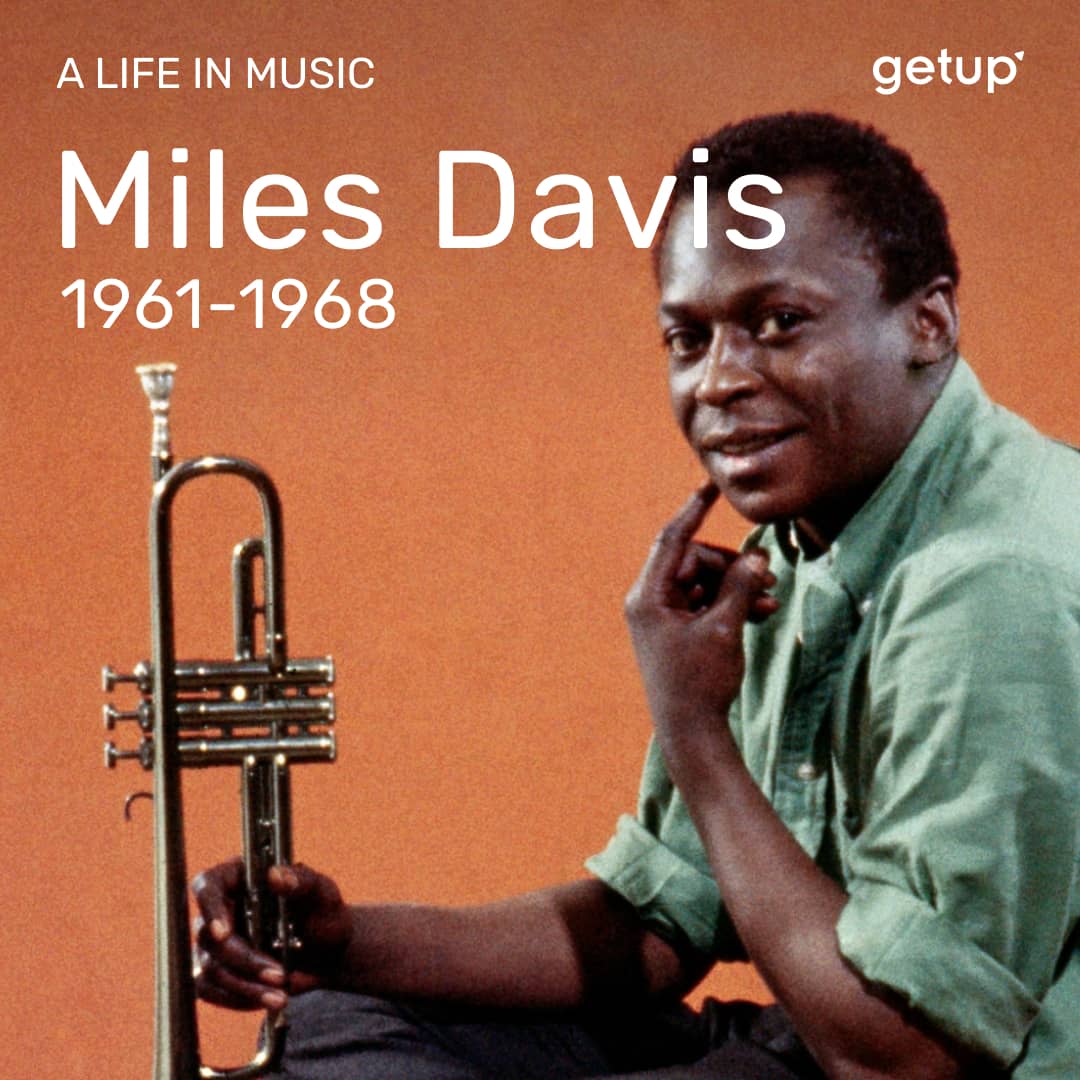Coltrane played one last time for his friend (“Teo”) before leaving for other horizons. Free jazz was in full swing with the first records by Ornette Coleman and Cecil Taylor. But Miles wasn’t a fan. He called the pianist ‘a sad piece of shit’ and mocked cornet player Don Cherry ‘with his little instrument’. And what was Miles up to?
Left to his own devices, went off to find himself. To do so he’d need some new musicians. He fell in love with seventeen-year-old drummer Tony Williams. ‘I thought I’d cracked when I heard what that little bastard was doing. All my excitement came back and I decided I had to have him.’ Davis also hired the young pianist Herbie Hancock – who had already had success with “Watermelon Man” – and Ron Carter to play double bass. With his rhythm section in place, Davis went on tour, taking George Coleman on saxophone (“Seven Steps to Heaven”). His playing, too faithful to the old Coltrane, frustrated the younger musicians. A fan of free music, Tony Williams convinced Davis to hire Sam Rivers for a few dates in Japan (“So What”). But it was Wayne Shorter that the trumpeter wanted, though he had to wait until his involvement with the Jazz Messengers was over.
The saxophonist finally joined the group in 1964. From then on, a new creative episode began with what would become known as ‘Miles’ second quintet’. Miles felt he had all the elements he needed to push his own limits. ‘Tony was the fire, the creative spark, Wayne the designer, Ron and Herbie the anchors.’ Together, through a series of revolutionary albums (E.S.P., Miles Smiles, Sorcerer) they developed an aesthetic of ‘Controlled Freedom’, a style of controlled improvisation that sought to avoid some of the pitfalls of the total freedom advocated by free jazz. Instead of sticking to a succession of modes as in the case of Kind of Blue, this new quintet increased the tonal possibilities by multiplying the modes, thus creating new harmonic foundations and other progressions. In fact, the music was arguably more open, ambiguous and unstable, but it never lost its way.
From 1965’s E.S.P. onwards, everything became based on a kind of musical telepathy. The orchestra was no longer organised around a single soloist. All the musicians improvised together, while remaining attentive to each other in order to preserve harmony and coherence. Building on this fruitful basis, a new stage was soon reached with the integration of electricity. From 1968 Davis encouraged Hancock to play a Fender Rhodes. ‘The acoustic piano is an outdated instrument. It belongs to Beethoven and no longer fits with our times.’ In the same vein, Davis sought to incorporate an electric guitar. This new craze came from his lover at the time, Betty Marbry. A young soul singer with a strong temperament, she made him listen to James Brown and meet Jimi Hendrix. She also chose psychedelic clothes for him (glasses with oversized lenses, lizard skin trousers, leather bracelets...).
Who would have imagined that soon Miles Davis would open the show for Neil Young & The Crazy Horse? Or set the Isle of Wight on fire with the legendary “Call It Anything”? In reality, what was coming was the final incarnation. Electricity, drugs, and a shooting...


.jpg)
.jpg)
.jpg)
